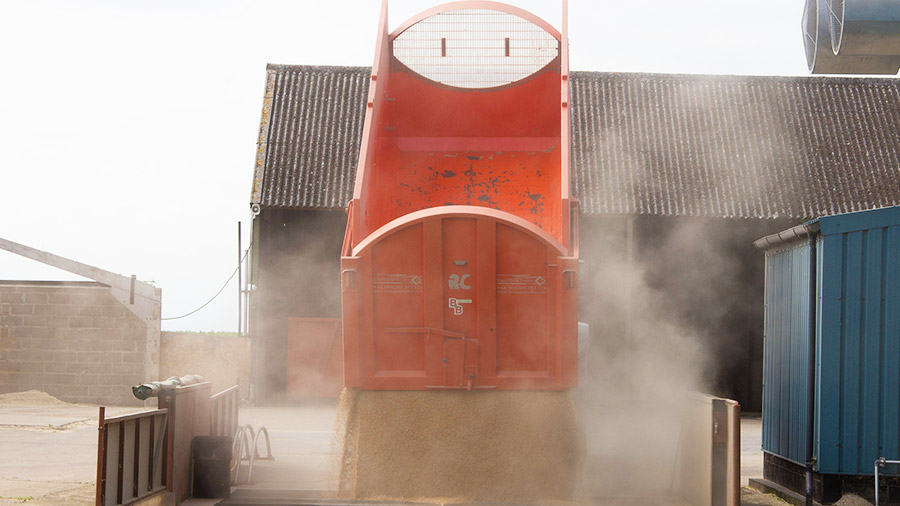Updated Defra survey results show higher profit in 2021-22
 ©Tim Scrivener
©Tim Scrivener Defra has increased significantly its earlier estimates of farm business income (FBI) for 2021-22 in almost all sectors.
The figures are based on survey results from the Farm Business Survey in England and show that FBI rose across all farm types except specialist pig farms, compared with the previous year.
See also: Higher interest rates call for stress testing of farm budgets
Cereals
For specialist cereal farms, average income rose 67% to £120,100, while general cropping farms saw income more than double to £145,400.
Better growing conditions than in 2020, a return to higher yielding winter crops and firm prices all contributed to the increases.
The average income for general cropping farms was considerably higher than forecast in spring 2022 because crop and livestock output had been underestimated, while input costs were lower than anticipated, said Defra.
Dairy
On dairy farms, average income rose by 52% to £140,200, largely driven by milk prices 12% higher than in the previous year.
Lowland grazing
On lowland grazing livestock farms, average income rose by 85% to £34,000, mainly due to higher output from cattle and sheep enterprises, which more than compensated for higher input costs.
LFA grazing
For grazing livestock farms in Less Favoured Areas (LFAs) similar drivers resulted in an average income of £42,900, a 29% increase compared to 2020-21, with higher than expected output again the main reason for the improvement.
Specialist pigs
On specialist pig farms, income fell by three quarters to £11,800, the result of higher input and especially higher feed costs.
The average basic payment income across all farm types in this year was about £27,900, a reduction of 2% on 2020-21 and accounting for about a third of FBI in the first year of BPS reductions.
Revisions to average Farm Business Income (£/farm) by farm type (England) for 2021-22 (2021 harvest year) |
|||
|
Farm Type |
Forecast: April 2022 |
Actual: November 2022 |
Change |
|
Cereals |
108,000 |
120,100 |
12,100 |
|
General cropping |
113,000 |
145,400 |
32,400 |
|
Dairy |
112,000 |
140,200 |
28,200 |
|
Grazing livestock (Lowland) |
19,000 |
34,000 |
15,000 |
|
Grazing livestock (LFA) |
34,000 |
42,900 |
8,900 |
|
Specialist pigs |
13,000 |
11,800 |
-1,200 |
|
Specialist poultry |
38,000 |
138,100 |
100,100 |
|
Mixed |
52,000 |
74,000 |
22,000 |
|
Source: Defra Farm Business Survey 2021-22 |
|||
What is Farm Business Income?
FBI equates to net profit. It represents the financial return on all unpaid labour (farmers and spouses, non-principal partners and their spouses and family workers) and on all their capital invested in the farm business, including land and buildings.
For corporate businesses it represents the financial return on the shareholders’ capital invested in the farm business.
What is the Farm Business Survey?
The Farm Business Survey (FBS) is an annual survey of the financial position and physical and economic performance of commercial farm businesses in England.
It is carried out through six universities on behalf of Defra and covers all types of farming in all regions of the country.
The survey includes owner-occupied, tenanted and mixed-tenure farms with a standard output of at least £22,000, based on activity recorded in the Survey of Agriculture and Horticulture the previous June.
In 2021, this accounted for about 52,539 farm businesses. In 2016 the sample was reduced from 1,800 to 1,750 farm businesses.
Data are collected by face to face interviews with farmers, conducted by trained researchers, with each record given a weight to make the sample representative of the population.
